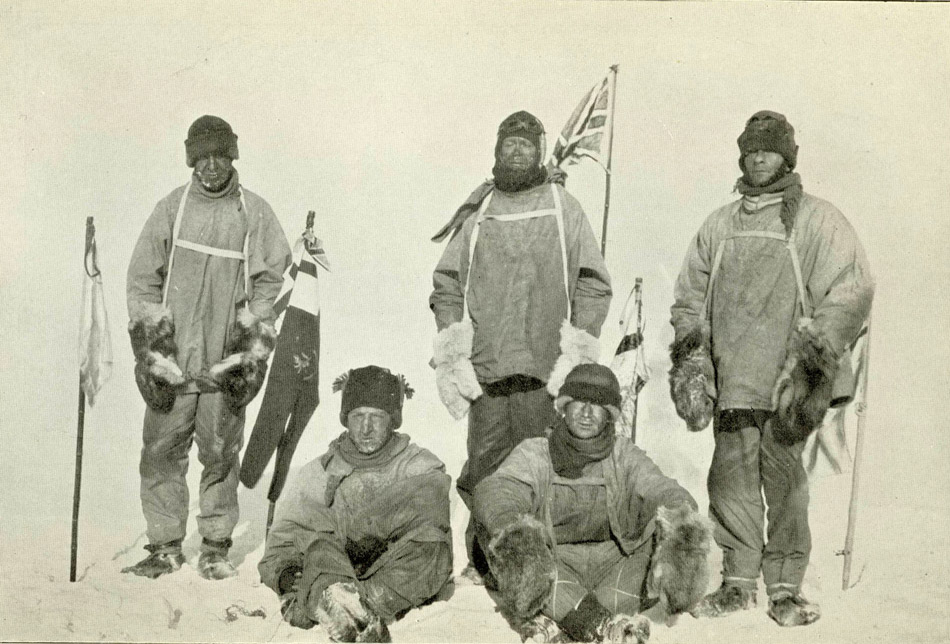What did Captain Scott and his team die of?
Terra Nova Expedition: The pole - p.1 - Preparations | The pole p.2 - Journey | The wider Terra Nova expedition | Time-line and info graphic | Crew of the Terra Nova | What went wrong for Scott to die? | What did Scott's team die of? | Race to the pole Amundsen and Scott | The Northern Party
The South Pole party from left to right Captain L. E. G. Oates, Lieutenant Henry R. Bowers, Captain Robert F. Scott, Dr. E. A. Wilson and Petty Officer Edgar Evans reached the South Pole, but all died on the return journey in 1912 - what did they die of?
The journey from Hut Point to the Pole and back was 1,532 miles or 2,465 kilometers.
A team of sixteen men, twenty three dogs, ten ponies, thirteen sledges and two motor sledges set off with Scott to enable a smaller group to be the first to reach the South Pole. The slowest, the motor sledges left on the 24th of October, the ponies on the 1st of November and dog teams on the 4th of November.
Depots of food and supplies had already been laid along the route, most of the team were there to help transport more food and provisions to enable a party of 4 to make the last leg to the pole and return without further help. Those not going to the pole turned back at different points over the first two months.
October 24th to November
4th of 1911 - Leave for the Pole in 3 groups.
January 4th 1912 - Final 5 continue to the
pole with no further support.
January 17th
- Reach the South Pole.
January 18th
- Begin return journey from the Pole.
February
17th - Edgar Evans dies.
March 16th
- Captain Oates dies.
March 19th
- Final camp made, 11 miles from One Ton Depot.
March 23rd - The last but one entry in Scott's
diary, all three remaining men are alive on this date.
March 29th - Last entry in Scott's diary, he is
presumed to have been the last survivor and died on this date.
The final cause of death in each man's case was hypothermia, getting to that point however was a long and slow process with a number of factors.
Insufficient food
We now know that the amount of rations taken by Scott were inadequate to what they should have been for the extremely energy intensive activity of manhauling their sledges. On the way to the pole, the rations amounted to 4,500 kcal per day and about 3,800 kcal per day on the way back, this is against an estimated requirement of 7,000 kcal per day, per man, or just 64% then falling to 54% of the required amount.
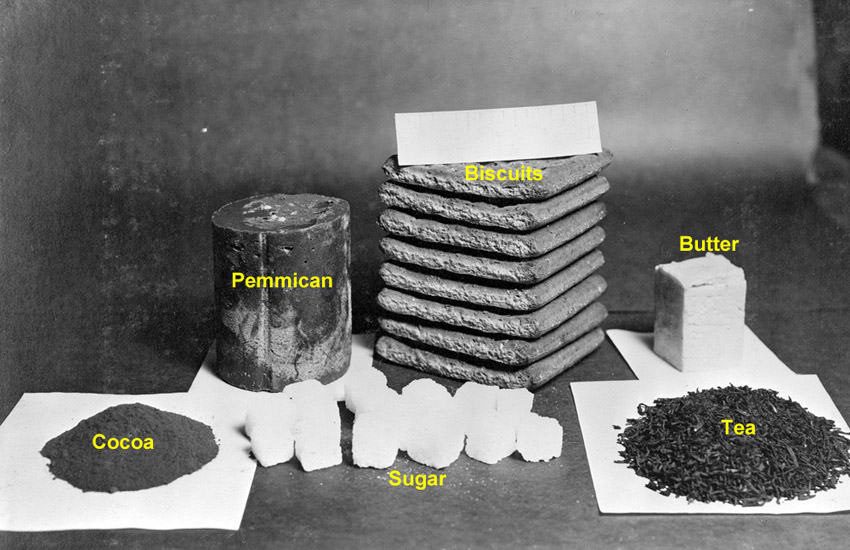 Rations for one man for one
day while manhauling
Rations for one man for one
day while manhauling
When energy intake from food is less than energy being expended the gap has to made up from bodily reserves. Firstly fat is lost which at the same time reduces the amount of insulation, so meaning that more energy is needed to maintain body temperature in cold conditions, if more energy continues to be expended than consumed, muscle begins to be broken down to provide metabolic energy, this loss of muscle leads to weakness and makes it more difficult to perform any kind of exercise.
The weather was also against them with very cold temperatures making the snow fine with a "sandy" texture as Scott frequently describes it so making the sledge heavier to pull without any "glide" as might be expected from a slippery surface. The sheer cold also had a part to play.
Lack of physical condition slowed the party down on the return journey and made them more susceptible to cold and frostbite. Eventually if there is not enough food to generate heat from within, the body temperature falls leading to hypothermia and ultimately death if the situation is not reversed.
All dated quotations on this page are from Scott's diary.
If this goes on and the weather
holds we shall get our depot without trouble. I shall indeed
be glad to get it on the sledge. We are getting more hungry,
there is no doubt. The lunch meal is beginning to seem inadequate.
We are pretty thin, especially Evans, but none of us are
feeling worked out. I doubt if we could drag heavy loads,
but we can keep going well with our light one. We talk of
food a good deal more, and shall be glad to open out on
it.
January 28th 1912
Scott and his team began to deteriorate on the way to the Pole, by the time they were on the way back, the daily distances they were covering were decreasing steadily.
We got away sharp at 8 and marched
a solid 9 hours, and thus we have covered 14.5 miles (geo.)
but, by Jove! it has been a grind.
January 22nd 1912
We did 4 1/2 miles this morning
and are now 8 1/2 miles from the depot - a ridiculously
small distance to feel in difficulties, yet on this surface
we know we cannot equal half our old marches, and that for
that effort we expend nearly double the energy.
March
8th 1912
Know that 6 miles is about the limit
of our endurance now, if we get no help from wind or surfaces.
March 11th 1912
The mileage
would have seemed ridiculously
March 18th 1912
Frostbite
Frostbite occurs when the body restricts blood flow to a part of the body as it is losing heat much too quickly, it is a way by which the body starts to make sacrifices of parts to preserve life.
Cold damage occurs when (initially) the skin falls below freezing point causing ice crystals to form inside live cells killing them in the process. If the area warms again, the skin swells and dark blisters form leading to a a hard black carapace. If the freezing is at the surface only the dead layer is lost in time and new healthy skin grows underneath, this form of frostbite is very painful and is known as superficial frost bite.
More serious frostbite affects deeper tissues such as muscle and bone beneath the skin. It nearly always leads to permanent damage sometimes including the loss of fingers and toes, even feet, hands and parts of the arm or leg. As the tissues are killed they can become gangrenous if not amputated, which itself can spread and cause more damage.
As well as causing direct damage, frostbite can be very debilitating, restricting mobility, reducing dexterity and use of the hands. A lack of food and hypothermia make frostbite more likely as the body rations resources to reduce heat loss.
Evans and Oates in particular suffered from frostbite much earlier than the others.
I don't like the easy way in
which Oates and Evans get frostbitten.
January 24th
1912
Poor Oates got it again in the foot.
I shudder to think what it will be like to-morrow. It is
only with greatest pains rest of us keep off frostbites.
March 14th 1912
The cold is intense, -40° at
midday. My companions are unendingly cheerful, but we are
all on the verge of serious frostbites..
March 17th
1912
Hypothermia
This occurs when the core body (the brain and torso containing the vital organs) falls from the normal temperature of 37°C to 35°C or below. Initially the body will try to generate heat by shivering, blood flow to the hands and feet and then arms and legs will be restricted to prevent further heat loss which results in clumsiness. The start of hypothermia is difficult to spot and may be strongly denied by the victim, sometimes hats, gloves and other clothing layers may be shed in a state of confusion.
I was first to reach the poor man
and shocked at his appearance; he was on his knees with
clothing disarranged, hands uncovered and frostbitten, and
a wild look in his eyes.
February 17th 1912 - About
Edgar Evans
Eventually the body takes final desperate steps to try and avoid death by slowing the heart beat and breathing, when the core reaches 28°C cardiac arrhythmias (irregular heartbeats) begin and by the time 20° is reached if not before, the heart will stop and death follows.
Edgar Evans - 17th Feb 1912
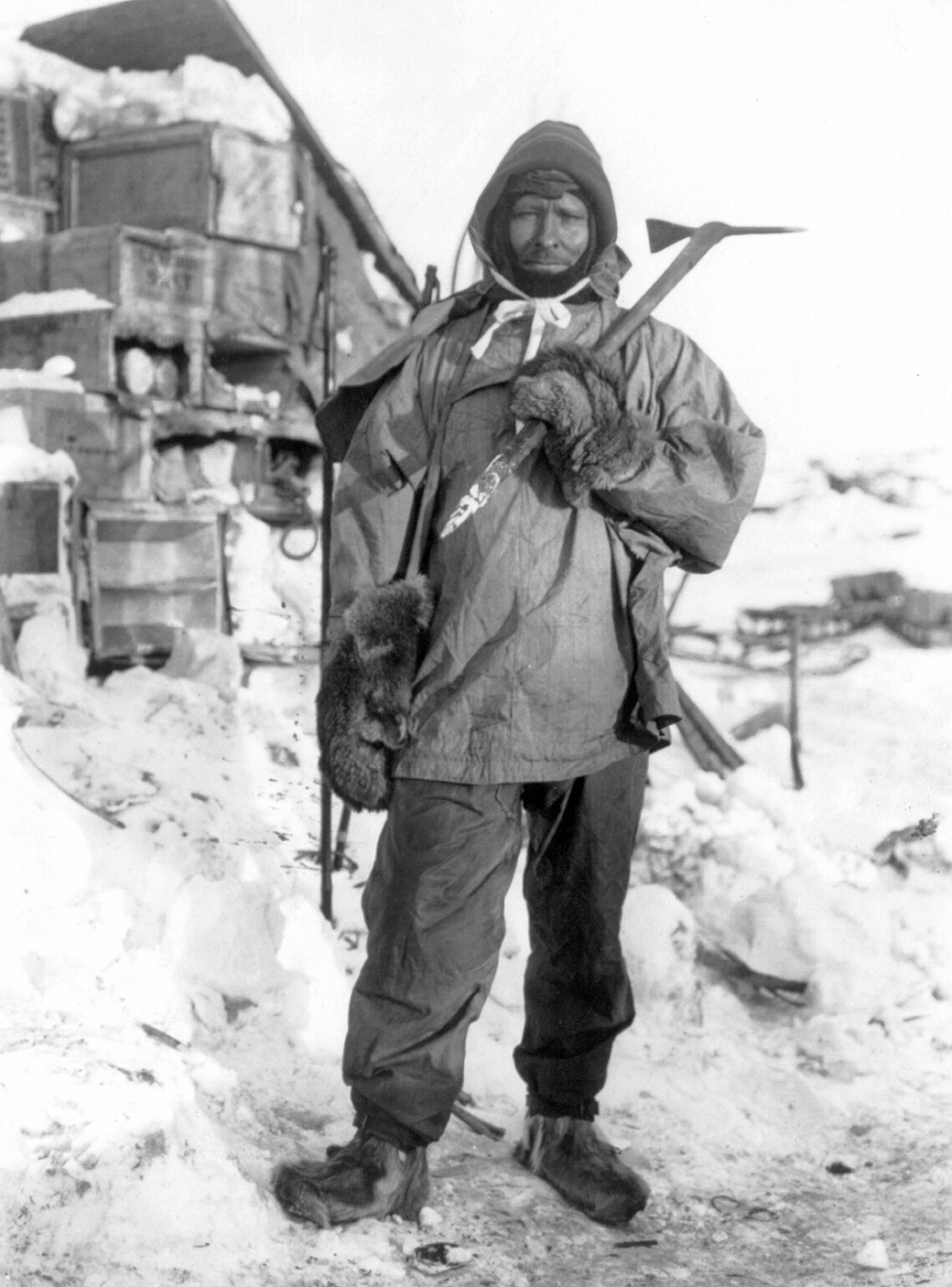
The first of the group to die, he was the largest of the group and as they were all given the same rations each day, he lost weight faster than the others as his rations were a smaller amount of his needs than they were for the other smaller men.
We are pretty thin, especially Evans...
January 28th 1912
He was carrying a hand injury that he had concealed from Scott which became infected and wouldn't heal, this hand started to suffer from frostbite as did his nose which gave him great discomfort. With his relative rations being lower than any of the other men, it made him more likely to suffer from frostbites as his body restricted peripheral circulation to maintain the core temperature.
What brought about Evans end more quickly than that of the others was a probable head injury that he sustained during one or more falls into crevasses while descending the Beardmore Glacier.
Just before lunch unexpectedly fell
into crevasses, Evans and I together - a second fall for
Evans, and I camped.... the party is not improving in condition,
especially Evans, who is becoming rather dull and incapable.
February 4th 1912
Edgar Evans succumbed to the cumulative effect of his physical and cold injuries on the 17th of February 1912. He started the day pulling the sledge but soon was walking alone and falling behind.
By this time we were alarmed, and
all four started back on ski. I was first to reach the poor
man and shocked at his appearance; he was on his knees with
clothing disarranged, hands uncovered and frostbitten, and
a wild look in his eyes. Asked what was the matter, he replied
with a slow speech that he didn't know, but thought
he must have fainted. We got him on his feet, but after
two or three steps he sank down again.
February
17th 1912 - About Edgar Evans
He was brought to the lunch camp by sledge and placed inside the tent where he died shortly afterwards.
Lawrence Oates - 16th March 1912
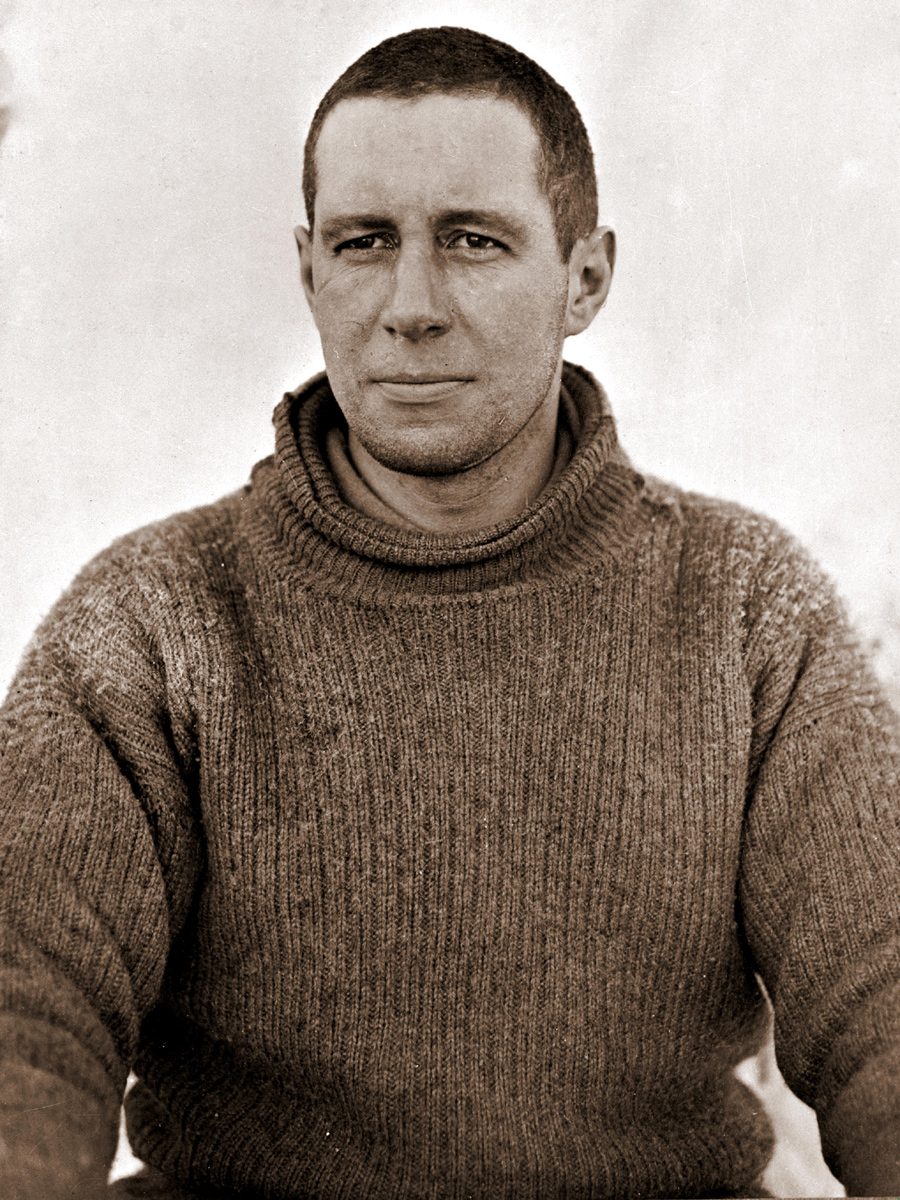
Oates along with Evans suffered from frostbite more readily than the others.
I don't like the easy way in
which Oates and Evans get frostbitten.
January 24th
1912
Oates had a war wound in his left leg which had left it an inch shorter than the right and walked with a limp, this was the first leg that gave him problems, it seems the old damage made it more susceptible to cold injury. He suffered from continual frostbite to his feet for much of the return journey that he concealed for as long as he could.
Titus Oates disclosed his feet,
the toes showing very bad indeed, evidently bitten by the
late temperatures.
March 2nd 1912
The result is telling on all, but
mainly on Oates, whose feet are in a wretched condition.
One swelled up tremendously last night and he is very lame
this morning.
March 5th 1912
As time went on, Oates deteriorated to the point where he was not able to pull the sledge any more and it was apparent that he was slowing the whole party down, his hands also started to suffer from frostbite. By the 10th of March his frostbites had led to gangrene and he started to ask what his chances of survival were. By mid March he asked to be left behind in his sleeping bag, the others encouraged him to go on as long as he could which he tried to do though with great difficulty and in obvious pain.
He slept through the night before last, hoping not to wake; but he woke in the morning - yesterday. It was blowing a blizzard. He said:
"I am just going outside and may be some time."
He went out into the blizzard and
we have not seen him since.
March 17th 1912
Oates walked to his death with the most famous of all last words. His end will have come through hypothermia, his body was never found, probably hidden from view by drifted snow somewhere on the great white plain of the Ross Ice Shelf to later become completely buried by snow and ice. Unfortunately his self-sacrifice to try and save his companions was to be unsuccessful.
Henry Bowers, Robert Scott and Edward Wilson - 23rd - 29th March 1912
Like Evans and Oates, the remaining three men were weakened by a lack of food and arduous labour for several months. By the 24th of February this was being exacerbated by a lack of fuel for their cooking stove, meaning they couldn't have as many hot drinks and that their food was not as hot as previously. It wasn't simply about comfort as any extra heat taken in from food and drink meant less body heat needed to be generated from their already inadequate rations.
In addition and very importantly, it meant that they were becoming dehydrated. By the end of February temperatures were regularly falling down to -40°F/C (minus 40 is the cross-over point for the Fahrenheit and centigrade scales) so the fuel they did have needed to raise the temperature of the snow and ice they were melting by an extra 10-30 degrees more than previously. Dehydration reduces physical performance and places an increased physiological burden on the body, another difficulty for their already stressed metabolisms to deal with.
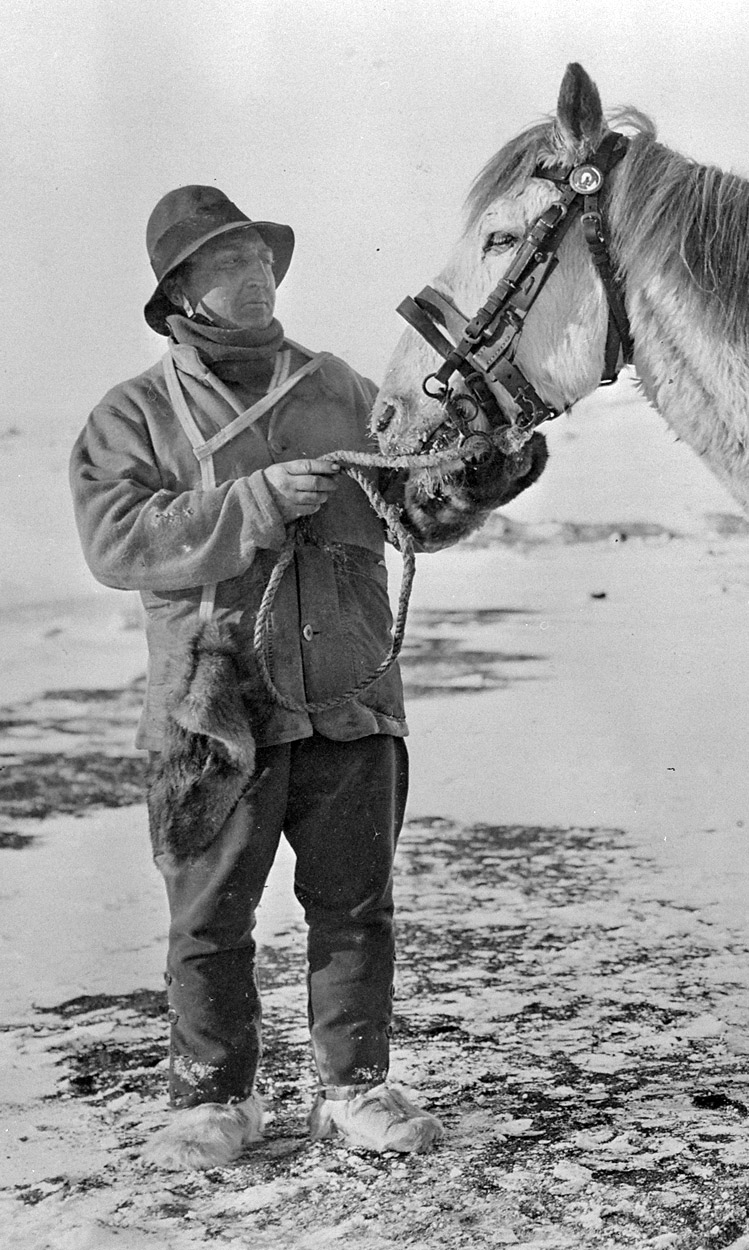 Henry
Bowers
Henry
Bowers
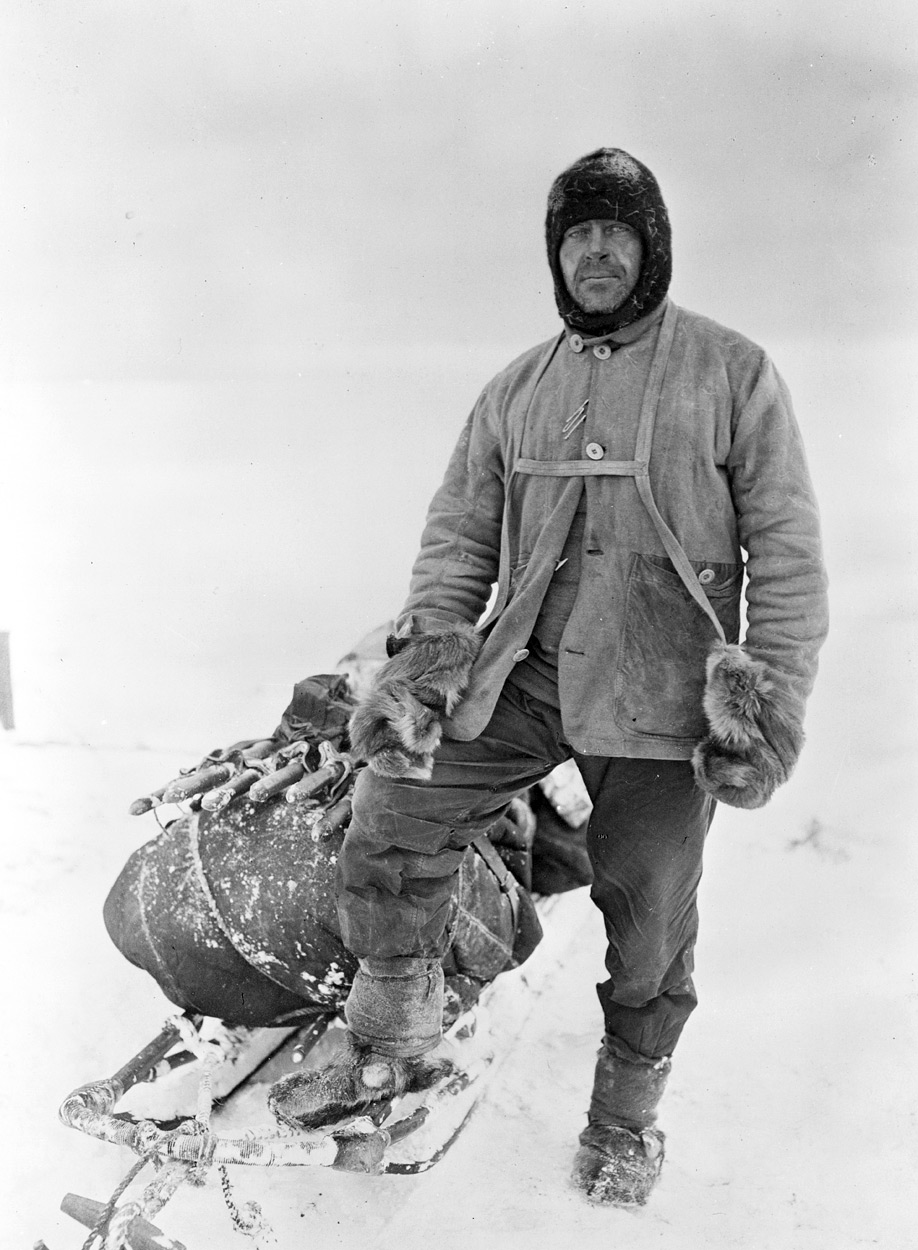 Robert Scott
Robert Scott
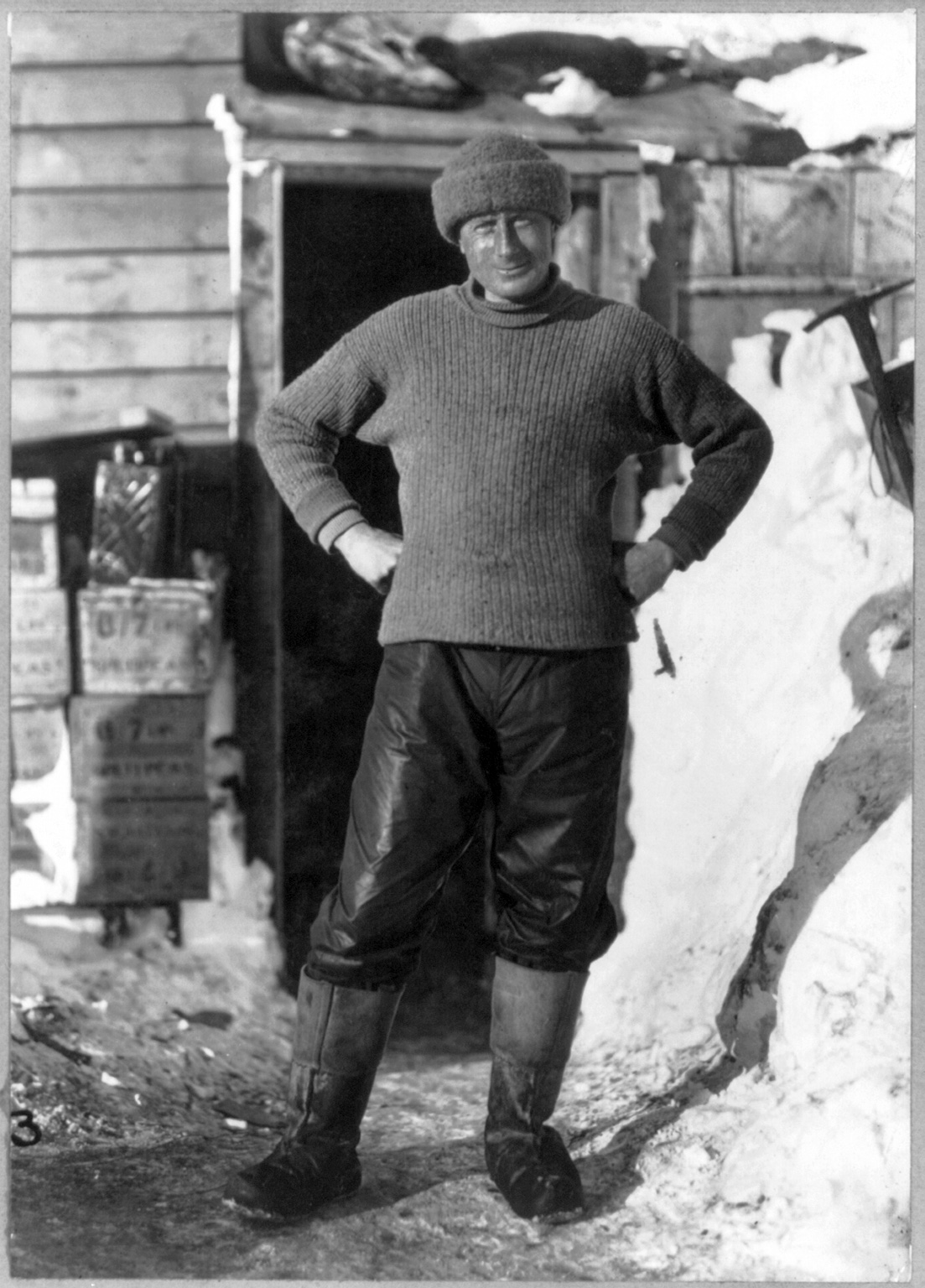 Edward Wilson
Edward Wilson
The loss of Evans and then a month later Oates, gave the remaining three a greater share of food and fuel, though it was still insufficient for their needs. By the 18th of March 1912, they were 21 miles from significant food and supplies at One Ton Depot, itself about 90 miles from Hut Point and safety. Up to this point Bowers, Scott and Wilson weren't suffering from any permanent effects of frostbite, nor were they carrying any other injuries, this was about to change:
My right foot has gone, nearly all
the toes - two days ago I was proud possessor of best feet.
March 18th 1912
All our feet are getting bad - Wilson's
best, my right foot worst, left all right. There is no chance
to nurse one's feet till we can get hot food into us.
Amputation is the least I can hope for now, but will the
trouble spread? That is the serious question.
March
19th 1912
On the 19th of March, the three pitched their tent for what would be the final time, now just 11 miles from One Ton Depot. They were trapped by a blizzard with little food and even less fuel. There was a decision that Bowers and Wilson were to set off for the depot and return with supplies while Scott remained in the tent unable to progress far or quickly with his frostbitten and gangrenous foot. The three were never to leave their tent again and the blizzard continued to blow. Scott's final diary entry was on the 29th of March:
Since the 21st we have had a continuous gale from W.S.W. and S.W. We had fuel to make two cups of tea apiece and bare food for two days on the 20th. Every day we have been ready to start for our depot 11 miles away, but outside the door of the tent it remains a scene of whirling drift. I do not think we can hope for any better things now. We shall stick it out to the end, but we are getting weaker, of course, and the end cannot be far.
It seems a pity, but I do not think I can write more.
R. SCOTT.
For God's sake look after our people.
29th March 1912
The tent was found later that year in November by a party from the expedition hut where they had passed a very sombre winter knowing almost for certain that the pole party had all perished. Scott is thought to have been the last to die from the positions of the bodies in the tent.
Death will have come from the combined effects of hypothermia and starvation.
Biographies: Henry Bowers | Captain Scott | Edward Wilson
Robert Falcon Scott Books and Video

The Coldest March: Scott's Fatal Antarctic Expedition
by Susan Solomon
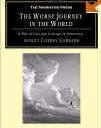
The Worst Journey in the World. Apsley Cherry-Garrard

The Voyage of the Discovery: Scott's First Antarctic Expedition
by Robert Falcon Scott, Ross MacPhee (Introduction), Fridtjof Nansen (Preface)

The Great White South: Travelling with Robert F. Scott's Doomed
South Pole Expedition by Herbert Ponting

Scott's Last Expedition: The Journals of Captain R.F.Scott

Edward Wilson's Antarctic Notebooks
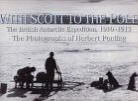
With Scott to the Pole
Herbert Ponting, illustrated

Discovery Illustrated: Pictures from Captain Scott's First Antarctic Expedition

Captain Scott by Sir Ranulph Fiennes

90 Degrees South: With Scott to the Antarctic (1933) DVD

History Chapters: Roald Amundsen and Robert Scott Race to the South Pole. Ages 4-8

Diary of the "Terra Nova" Expedition to the Antarctic, 1910-12

